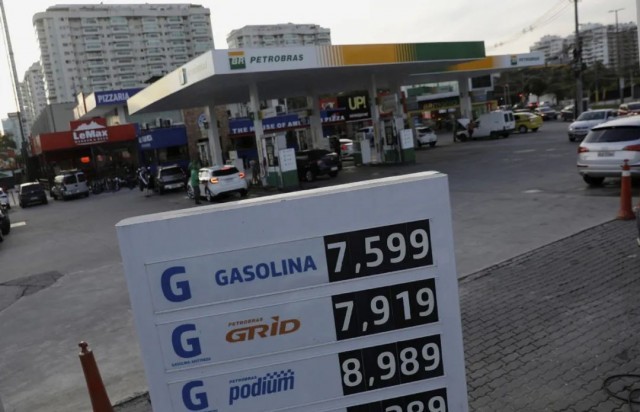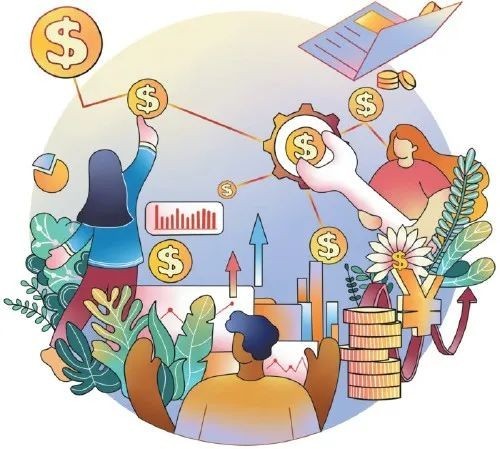Under inflation, Latin America may repeat the "10 years of lost ten years"
Author:China Daily Time:2022.07.26
[Introduction] The level of inflation in many countries in the world has soared from some policy decisions in the United States. Among them, the Latin American countries close to the United States are particularly affected. Around the 1980s, the Federal Reserve's expected rate hikes overwhelmed the US economy decline, resulting in Latin America's "lost ten years". Compared with the situation at the time, Latin American countries have greatly reduced their dependence on the United States. They have established new types of partnerships with emerging countries such as China. Essence

The international situation is turbulent, the new crown epidemic has continued to spread, and the conflict of Ukraine has not eased. The United States initiated unilateral sanctions on China, the price of commodities rose, inflation has intensified, and the global supply chain was broken ... The world economy is intensified.
Western analysts after studying the annual inflation rate of the G20 country released in May this year believe that the impact of inflation in this round of inflation is not extensive, but even so, the inflation problem cannot be underestimated. Among the members of the G20, the inflation rates of Turkey, Argentina and Russia have reached 73.5%, 60.7%, and 17.1%, respectively, far exceeding the average level of G20.
The average inflation rate of the remaining 17 countries was 6.3%. The inflation rates of Brazil, the United Kingdom, the Netherlands, Spain, and the United States are higher than that of this average, while Indonesia, Switzerland, Japan, Saudi Arabia and China are far lower than this level. Among them, China's inflation rate is the lowest, 2.1%, which is equivalent to one -third of the average inflation rate of 17 countries.
Even if it is considered the sharp rise in the prices of commodities such as oil and wheat, inflation is by no means a global issue, but on the policy choices of various countries. In view of the influence of the US dollar leading position on the international financial system, we must pay special attention to US policies. In May this year, the inflation rate in the United States was as high as 8.6%, the highest level since 1981.
The soaring inflation is largely derived from certain policy decisions of the United States. For example, the decline in the demand after the adoption of artificial measures to meet the epidemic, and an arbitrarily imposed tariffs on imported industrial products (especially products from China) to restrict the production and sales of semiconductors. Sanctions on Russia and so on. This series of measures have pushed production costs, paralyzing the original highly integrated production chain, and thus the phenomenon of a large number of commodity shortages. The US sanctions on Russian oil and natural gas also directly led to rising energy prices.

In order to cope with this situation, on June 15, the Federal Reserve raised its short -term interest rate by 75 basis points, which is the maximum rate hike for the Fed since 1994. Fed officials predict that by the end of 2022, the interest rates of federal bonds will be between 3.25%and 3.5%, and by 2023, it will reach 4%.
The US adjustment interest rate will have an impact on the world. This increases the cost of borrowing, leading to the appreciation of the US dollar and reducing international financial liquidity. Essence
The Federal Reserve's interest rate hike has a systematic influence. The situation facing the Latin American countries located near the United States is particularly tricky, because the region not only rely on external capital flows as the balance of payments and public debt exhibition financing, and the exports are mainly agricultural products, energy and minerals, etc. primary product.

The impact caused by the "rapid turning" of US interest rate policy has a precedent in history. From 1970 to 1980, after the United States encountered the second oil crisis, the Federal Reserve adopted an expected interest rate hike policy: the valid federal fund interest rate rose from 10.94%in August 1979 to 19.1%in June 1981. As the US economy entered a period of recession, the US dollar appreciated sharply, which reversed the trend of continued depreciation of the US dollar since the end of the fixed exchange rate system under the Bretton Forest system in 1971. The huge trade deficit between 1981 and 1985 was offset by a strong fund for flowing into the international income and expenditure capital account. Calculated by constant value, oil prices fell from nearly $ 120 per barrel in 1980 to less than $ 40 per barrel in 1989.
From the perspective of Latin American countries, the rise in interest rates has led to the continuous debt crisis of the 1980s. People call this stage "the decade" for Latin America's economy. The decline in the US economy has exacerbated this situation, because the Latin American countries have declined with the US exports, which led to a decrease in its fiscal revenue and unable to bear high interest rates and repay huge debt. In August 1982, Mexico announced the suspension of debt repayment; in November of the same year, Brazil also announced the suspension of debt repayment.
Only by history can we better understand the grimness of the current situation, but the current economic and political situation is very different from the early 1980s. Since the "lost ten years", Latin American countries have greatly reduced their dependence on the US market. Most countries that have imported demand for Food Food and Raw Materials are concentrated in Asia, and China is the main importer. China is now the largest trading partner of Brazil, Chile, Argentina and Peru. The United States and the European Union are no longer the only source of productive investment in Latin American countries. China has launched important cooperation with Latin America through direct investment or loans, especially the “Belt and Road” initiative. Similarly, Latin American countries have not fallen into the Cold War because they are working hard to establish a new type of partnership with China, India, Russia and African countries.
However, although the current international environment is more optimistic than in the past, Latin American countries themselves are still difficult to crack. For example, Brazil still increases interest rates to 13.5%in the case of large -scale unemployment, low investment rate, and stagnation of GDP growth. This response measure only seeks to curb public debt expansion and does not try to improve GDP accordingly, which will only bring catastrophic consequences to the national economy. New Liberalism's "no choice" logic, the consensus of Washington, and the evaluation of Latin America by the British and American rating agencies are no longer accepted by Latin American countries. Latin America should overcome the inertial model, learn how other countries maintain economic growth in international turbulence, and control inflation. They also need to innovate in economic policies and explore cooperation with other developing countries.
"No choice" neo-liberalism: In the 1980s and 1990s, some western rule elites claimed that the elite capitalist democracy led by the Anglo-Saxon model will continue. The United States and its allies will ensure the global permanent order and peace. Neo -liberalism characterized by "freedom market" and "small government" will bring benefits to everyone, other than that.
Although these changes are extremely difficult, the Latin American region should not repeat the same mistakes and fall into another "lost ten years".

- END -
Hong Kong's competitiveness ranking rose to 5th, Legislative Councilor: reflect the "one country, two systems" superiority
[Global Times Comprehensive Report] In the latest 2022 World Competitiveness Annual Report (2022 Report) in Lausanne International Management and Development, Hong Kong, it rose from 7th to fifth